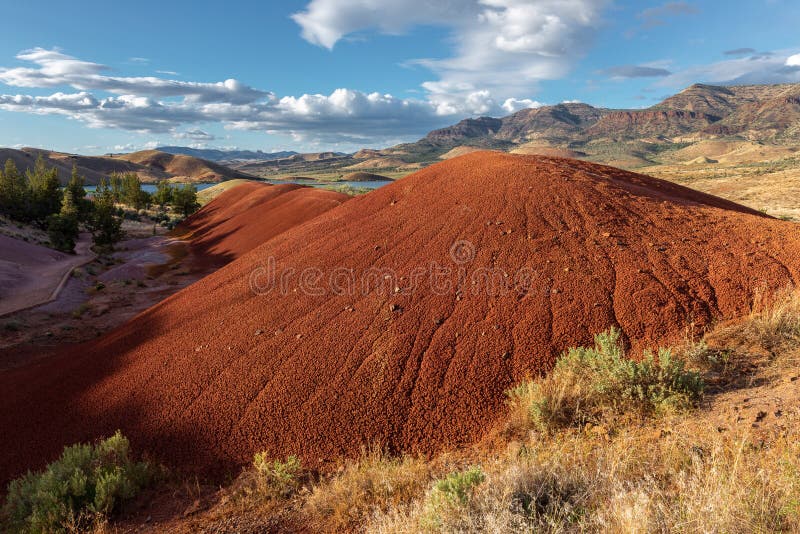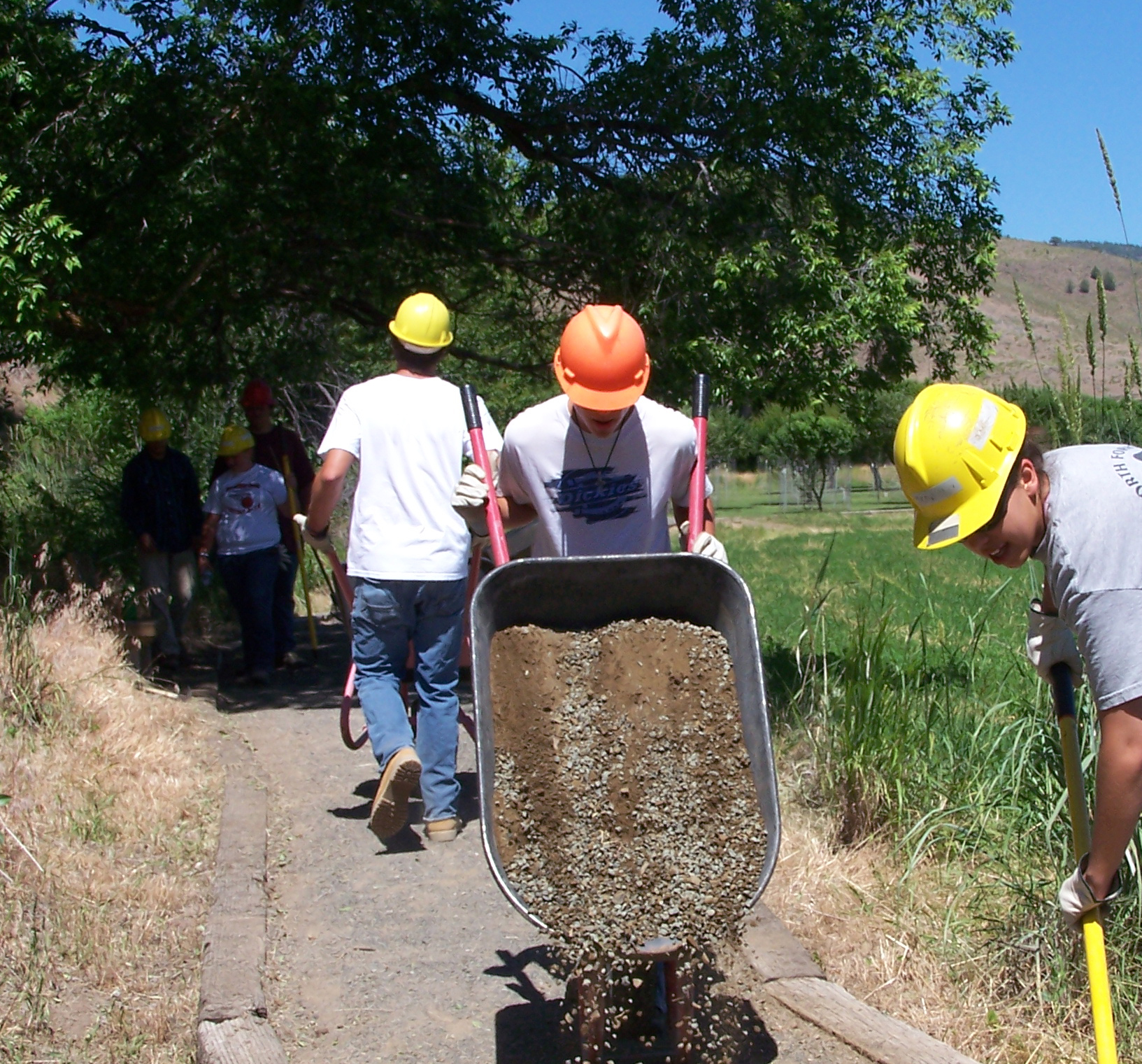John Day Fossil Beds Nationwide Monument Wikipedia
Table of Content
John Day Fossil Beds National Monument's breathtaking surroundings is a place the place visitors can discover historic vegetation and animals. John Day Fossil Beds National Monument is located in north central Oregon, about one hundred forty five miles southeast of Portland. To study extra about the monument, please choose an space of interest from the navigation bar on the left. Divided into three units—Clarno, Sheep Rock and Painted Hills—the 19,000-acre John Day Fossil Beds National Monumentis one of the world’s richest repositories of plant and mammal fossils.
Digging, disturbing, or amassing any of the park's pure resources, including fossils, is prohibited. No mountain biking is allowed on monument land, though the Malheur National Forest east of Dayville has biking trails. Fishing is authorized from monument lands along the John Day River for anyone with an Oregon fishing license. Rafting on the John Day River is seasonally well-liked, though the favored runs start at or downstream of Service Creek and do not pass through the monument. Risks to monument visitors embody extremely hot summer temperatures and icy winter roads, two species of venomous rattlesnakes, two species of venomous spiders, ticks, scorpions, puncturevine, and poison ivy. Large animals that frequent the park embrace elk, deer, cougar, and pronghorn.
City Of Fossil
The Thomas Condon Center includes places of work and laboratories in addition to displays of the fossils and ecosystems through time. The Painted Hills Unit is aptly named for the pink and gold beauty of the hills which can be seen on the paths. The Painted Hills Unit is positioned 9 miles northwest of Mitchell alongside Burnt Ranch Road, which intersects U.S. Subsequent ashfall from eruptions in the Cascade Range in the late Miocene contributed to the Mascall Formation, layers of stream-deposited volcanic tuffs laid atop the Picture Gorge Basalt. Preserved within the Mascall are fossils of animals corresponding to horses, camels, rhinoceroses, bears, pronghorn, deer, weasels, raccoons, cats, canine, and sloths. These fauna thrived in the monument's open woodland and savannah between 15 and 12 million years in the past.

Cached in a excessive desert full of towering rock creations and multi-colored hillsides, it’s also one of many country’s most scenic locations. This is an area of the park that has been extensively excavated and studied by paleontologists and the Park Service has put out a number of interpretative indicators explaining the history of the realm. After ending at the Condon customer center, a worthwhile cease is simply up the street about one-half mile. The restored James Cant Ranch served as the unique visitor center after the National Park Service bought the property when the monument was established in 1975. Remote and arid, the John Day basin near the fossil beds was gradual to attract homesteaders.
Select Allgeneral Curiosity Guides
The fossils of oak, sycamore, maple, ginkgo, and elm bushes replicate the world's cool local weather throughout this time period. After one other interval of abrasion, a series of lava eruptions from fissures throughout northeastern Oregon, southeastern Washington, and western Idaho inundated much of the Blue Mountain province with liquid basalt. The most distinguished of these formations throughout the monument is the Picture Gorge Basalt, which rests above the John Day Strata. Before the arrival of Euro-Americans in the nineteenth century, the John Day basin was frequented by Sahaptin individuals who hunted, fished, and gathered roots and berries in the area. After road-building made the valley more accessible, settlers established farms, ranches, and a few small towns alongside the river and its tributaries. Paleontologists have been unearthing and studying the fossils within the region since 1864, when Thomas Condon, a missionary and newbie geologist, recognized their significance and made them identified globally.

January is the coldest month, when highs average forty two °F (6 °C) and lows average 24 °F (−4 °C). The highest recorded temperature in Mitchell was 107 °F (42 °C) in 1972, and the bottom was −27 °F (−33 °C) in 1983. May is mostly the wettest month, when precipitation averages 1.sixty five inches . The John Day basin remained largely unexplored by non-natives till the mid-19th century.
No meals, lodging, or gas is available within the park, and camping is not allowed. Hours of operation for the Cant Ranch and its cultural museum differ seasonally. To 5 p.m except for federal holidays in the course of the winter season from Veterans Day in November by way of Presidents' Day in February. Its amenities embrace a fossil museum, theater, schooling classroom, bookstore, restrooms, and consuming fountains. Included among the greater than 50 species observed are red-tailed hawks, American kestrels, great horned owls, widespread nighthawks, and great blue herons.

This zero.4-mile round journey takes you out to a wonderful vista of the John Day River Valley. Besides the house, visitors can wander the grounds and see all of the buildings which are intact such because the bunkhouse, chicken coop, and privy. The new home was in-built 1917 and a few rooms are open for public viewing. Vintage objects are displayed and historical past and every day life of Cant's household and area are defined. Across the road stands Sheep Rock, the monument's signature landmark, and the view is great. He showed his finds to a young minister and amateur paleontologist named Thomas Condon who grew to become excited over what were fossils and needed to know the place they came from.
History
The Turtle Cove strata—an aqua-hued rock layer fashioned by way of millions of years of volcanic ash accumulation—greet travelers to the Monument’s Sheep Rock Unit. The Sheep Rock Unit presents a number of scenic mountaineering trails and overlooks in 4 completely different places with probably the most strenuous hikes situated at the Blue Basin Trailhead. The fossil museum and gallery presents a stunning array of over 500 fossils. There are fossilized seeds, nuts, leaves, and wood (the Oregon state fossil "Dawn Redwood" was found here) and interesting large items which are conglomerates of assorted flowers.
Paleontologists at the monument find, describe the situation of, and collect fossil-bearing rocks from greater than seven hundred sites. They take them to the paleontology laboratory at the customer heart, the place the fossils are stabilized, separated from their rock matrix, and cleaned. The fossil specimens are then catalogued, listed, stored in climate-controlled cupboards, and made out there for analysis.
Fossils Of The John Day Region
The barren panorama is punctuated by bands of soil in vivid shades of gold, pink, black, and orange. Multiple easy trails discover the terrain, together with the Painted Cove Trail, which traverses a boardwalk set amid big mounds of rust-red claystone. More than 80 soil sorts help a wide variety of flora throughout the monument. These soils stem from past and current geologic activity as properly as ongoing additions of organic matter from life types on or near the floor. Important to many of those communities is a black cryptobiotic crust that resists erosion, stores water, and fixes nitrogen utilized by the plants. Volcanic tuffs and claystones that lack essential vitamins assist few microorganisms and plants.

Geese nest within the park every summer time, and flocks of sandhill cranes and swans cross overhead every year on their migratory flights. Others seen near the Cant Ranch and the customer heart embody rufous hummingbirds, Say's phoebe, yellow warblers, western meadowlarks, and American goldfinches. Visitors on trails might encounter canyon wrens, mountain bluebirds, mountain chickadees, black-billed magpies, and other birds. Pets are allowed in developed areas and alongside climbing trails but must be leashed or in any other case restrained. Horses aren't allowed on climbing trails, in picnic areas, or on bare rock exposures in undeveloped areas of the monument.
All had been hunter-gatherers competing for resources such as elk, huckleberries, and salmon. Researchers have identified 36 websites of related archeological curiosity, including rock shelters and cairns, in or adjoining to the John Day Fossil Beds National Monument. Most significant among the many prehistoric sites are the Picture Gorge pictographs, consisting of six panels of rock art within the canyon at the south end of the Sheep Rock Unit. Sign as much as receive the most recent NPF news, info on how you can support our nationwide treasures, and travel ideas in your subsequent trip to the parks.
Comments
Post a Comment